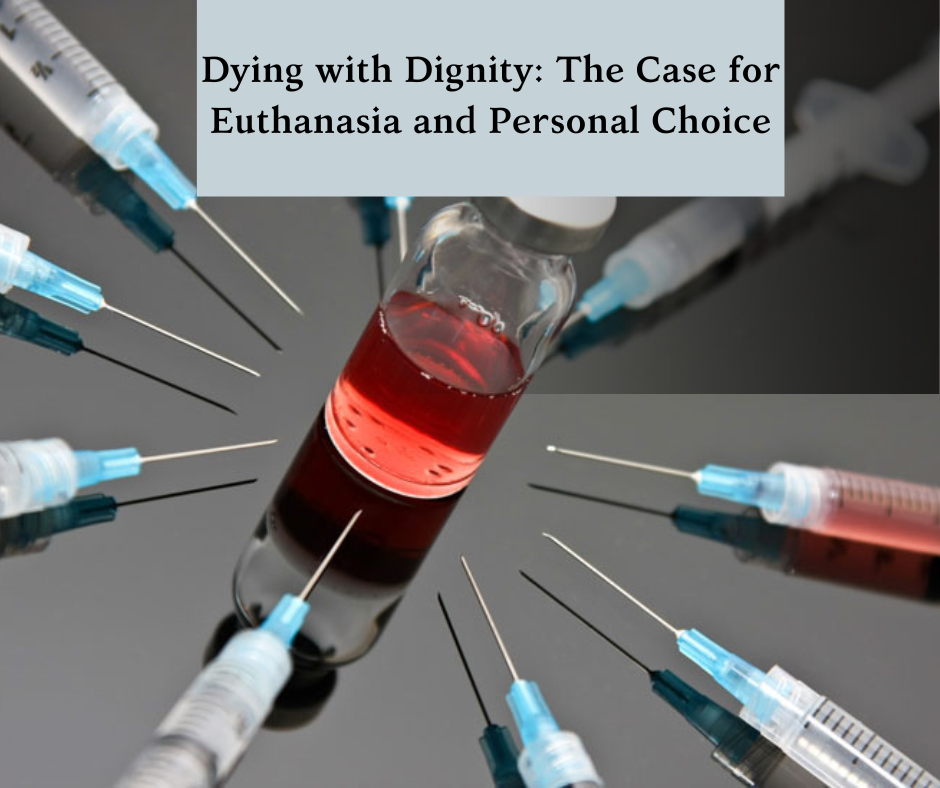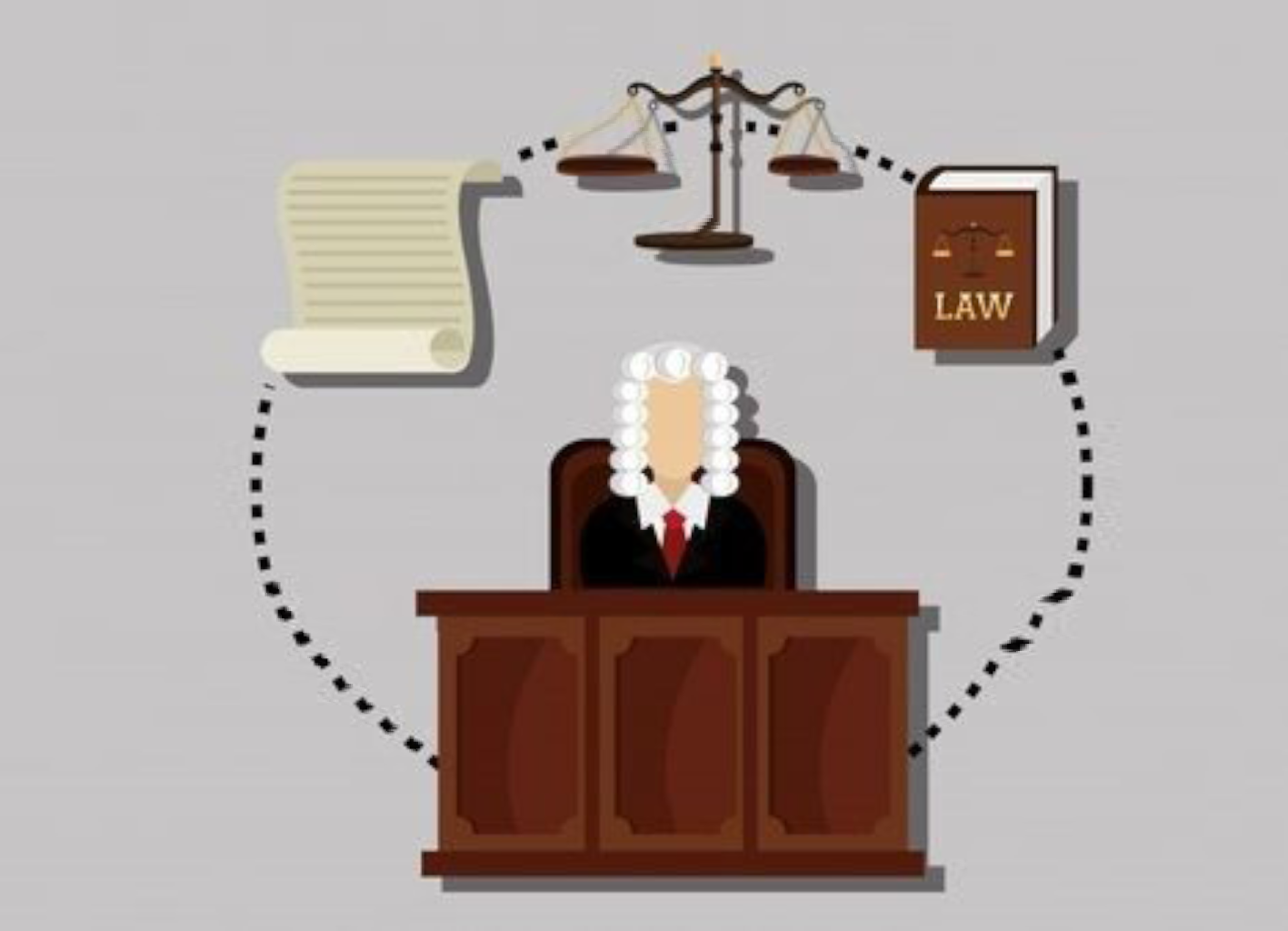Introduction-
The concept of euthanasia has been a controversial issue since its emergence. The word “euthanasia” comes from the Greek words “Eu” meaning “good” and “thanatos” meaning “death“, and together these words mean “good death“. Euthanasia means hastening the patient’s death to prevent further suffering. Active euthanasia is an intentional act by a physician to end the life of a patient or terminally ill person, usually by administering antibiotics. Passive euthanasia means withholding or withholding medical treatment necessary to sustain life.
There are three types of euthanasia related to consent euthanasia; voluntary euthanasia at the request of the patient, involuntary euthanasia without the patient’s consent, and involuntary euthanasia if the patient cannot give consent. Patients who consider euthanasia often do so for a variety of illnesses such as cancer, AIDS, or other incurable diseases. Decisions can be divided into physiological factors and psychological factors. Physical conditions that affect quality of life include severe pain, nausea, difficulty swallowing, paralysis, urinary incontinence, and difficulty breathing. Psychological problems include depression, feeling burdened, fear of losing control or dignity, or dislike of addiction. But some believe that suicidal thoughts and inadequate care can lead to a desire to euthanize.
While passive euthanasia is accepted worldwide, active euthanasia is banned in almost all countries. Voluntary euthanasia is considered murder and a crime in many countries and is punishable by up to 14 years in prison. However, active euthanasia is legal in some countries, including the Netherlands, Belgium and Luxembourg. Assisted suicide is legal in Switzerland and some US states, including Oregon, Washington and Montana. Belgium recently passed a law in parliament that, unlike previous laws, removes all age limits for euthanasia. Approximately 1,400 cases of euthanasia are reported each year in Belgium alone. The phenomenon of “death tourism” or euthanasia tourism is a growing phenomenon in which people seek euthanasia or assisted suicide in countries where these practices are legal. Switzerland is particularly prone to this situation; Patients from European countries such as England, Germany and France go there every year to end their lives. Euthanasia accounts for approximately 2% of all deaths in the Netherlands.
Euthanasia laws vary from country to country. Below is an overview of the legal status of euthanasia in various countries:
Netherland:
Netherlands was the first country to implement euthanasia. In the Netherlands, both active voluntary euthanasia and physician-assisted suicide are permitted under certain conditions established by the Termination of Life on Request and Assisted Suicide (Review Procedures) Act of 2002. The Act provides an exemption from criminal prosecution for physicians who have complied with the due care requirements outlined in the Act and have reported the case. Euthanasia may be performed on adults and on children older than twelve years of age, subject to specific criteria and procedures.
Belgium:
In Belgium, active euthanasia is legal under the Euthanasia Act, which came into force in 2002. Euthanasia is given only to people who have suffered serious and incurable injuries due to illness or accident. In the bill, the age limit for euthanasia is determined as 18. Importantly, this bill does not define assisted suicide or physician-assisted suicide.
Euthanasia is illegal in Switzerland, but assisted suicide is not considered a crime unless the donor’s wishes are selfish. However, there is no specific law regulating this practice.
In Luxembourg, euthanasia is legal under the Palliative Care/Euthanasia Act 2009, which requires life-saving or advanced direction. Doctors should consult with colleagues to assess whether the patient is ill, has a serious and incurable disease, and has a death wish.
France:
French President Emmanuel Macron has announced plans to introduce a law on assisted dying to be submitted to parliament in May 2024. The move potentially positions France to become the next European country to legalize euthanasia. Terminally ill, after extensive consultation with a committee of French citizens on “active assistance to the dying”.
According to the proposed legislation, only fully mentally disabled adults suffering from incurable and life-threatening illnesses, with unmanageable pain, would be able to apply for assistance in dying. Macron emphasized the need for change to address situations deemed inhumane, to balance individual autonomy and national solidarity.
The president has also outlined specific criteria for eligibility, excluding minors and patients with certain conditions, such as psychiatric or neurodegenerative disorders. If approved by the doctors, a lethal substance would be prescribed, which the patient could administer himself or have third-party assistance.
Voluntary euthanasia, assisted suicide and physician-assisted suicide (PAS) are illegal in Australia. Euthanasia and assisted suicide are prohibited under Australian state criminal laws and the laws of New South Wales, South Australia and Victoria. The Northern Territory briefly decriminalized euthanasia and PAS under the Terminally Illness Rights Act (1995). This law went into effect in 1996, making the Northeast the first region in the world to legally allow voluntary euthanasia and PAS. However, the law did not last long and was withdrawn by the government in 1997 with the Euthanasia Act of 1997, which prevented states from passing laws allowing euthanasia or assisted suicide.
Indian Perspective
In India, where problems such as illiteracy, poverty and a lack of basic medical care persist, euthanasia has little meaning. Currently, euthanasia has no legal status and is considered a criminal offense under Indian law. Section 309 of the Indian Penal Code (IPC) deals with attempted suicide, while Section 306 deals with abetment of suicide, both of which are punishable.
Efforts have been made to decriminalize Section 309 of the IPC, recognizing that suicide attempts often stem from desperation and mental anguish. However, the Supreme Court of India clarified that the “right to life” guaranteed by Article 21 of the Constitution does not include the right to die. The court held that while Article 21 protects life and personal liberty, suicide is an unnatural termination of life and therefore incompatible with that right.
The Medical Council of India considers the practice of euthanasia unethical, although it recognizes the ethical considerations of withdrawing life support in cases of brain death.
In a landmark decision in March 2011, the Supreme Court allowed passive euthanasia and permitted withdrawal of life support from patients in a persistent vegetative state. However, the court rejected active euthanasia with the administration of lethal substances. The ruling outlined guidelines for passive euthanasia and said it would not become law until Parliament passed legislation to address the issue. In addition, the court urged Parliament to repeal Section 309 of the IPC as it considers it obsolete.
Referring to the case of Aruna Shanbaug, who was in a vegetative state for 37 years, the court emphasized that decisions on mercy killings must be supervised by high courts. The bench emphasized the importance of helping individuals suffering from depression rather than punishing them, while acknowledging the lack of legal provisions for passive euthanasia.
Arguments for and against legalizing Euthanasia
Every patient has the right to determine their treatment, including when and how they wish to die, based on the principles of autonomy and self-determination. Autonomy grants patients the power to make health and life-related decisions that can no longer be questioned or challenged. Patients have the freedom to continue or stop treatment, even if it could result in their death. This is considered a fundamental aspect of human rights, which includes the right to make personal decisions and to have a dignified death.
Proponents of euthanasia argue from a beneficence perspective, arguing that society’s basic moral values such as compassion and mercy dictate that no patient should endure excruciating suffering. He argues that performing euthanasia to alleviate a patient’s pain and suffering ultimately does more good than harm. Proponents of assisted suicide (ASS) argue that it becomes ethically justifiable when a terminally ill patient’s quality of life deteriorates to the point that death is the only reasonable means of alleviating their suffering. They argue that euthanasia is more justifiable when there is no prospect of recovery and the patient makes a conscious decision to end their life. In essence, euthanasia represents an extension of the patient’s autonomy, allowing him to decide which treatment to accept or refuse.
Euthanasia is often promoted as a solution to alleviate excruciating suffering in the last stages of life. For those dealing with terminal illnesses or debilitating conditions, the idea of enduring long-term pain and loss of dignity can be deeply distressing. In such circumstances, euthanasia provides a compassionate and humane option to end suffering and preserve dignity as death becomes inevitable.
Central to euthanasia advocacy is the principle of personal choice in end-of-life care. Just as individuals have the autonomy to refuse life-sustaining treatment, advocates argue that they should also have the freedom to decide when and how they wish to die. This empowerment allows individuals to maintain control over their lives, even during terminal illness or incapacity.
While critics often raise concerns about the potential for abuse and coercion, particularly against vulnerable populations, advocates argue that robust safeguards and ethical considerations can effectively address these risks. By implementing strict eligibility criteria, involving multiple medical professionals in decision-making, and ensuring informed consent, euthanasia can be performed in a manner that adheres to ethical standards and protects against abuse.
Conclusion-
The euthanasia debate is complex and multifaceted, touching on deeply held beliefs about autonomy, suffering and the sanctity of life. Advocates argue for its legalization as a means of alleviating excruciating suffering and preserving individual autonomy in end-of-life decisions. They emphasize the importance of preserving dignity and personal choice, enabling individuals to maintain control over their lives even in the face of terminal illness.
Opponents, however, raise concerns about possible abuse, coercion, and a slide toward devaluing human life. They emphasize the importance of protecting vulnerable populations and preserving the sanctity of life and argue that euthanasia undermines these fundamental principles.
Despite the ongoing debate, euthanasia poses significant ethical, legal, and practical challenges. While some countries have legalized certain forms of euthanasia under strict regulations, others continue to prohibit it. The issue remains highly contentious, with no simple solutions.
Ultimately, any euthanasia decision must carefully balance the principles of autonomy, beneficence, and justice while considering different perspectives and values in society. It requires thoughtful consideration of ethical guidelines, robust safeguards, and compassionate end-of-life care to ensure that the rights and dignity of individuals are respected while minimizing the potential for harm or abuse.



